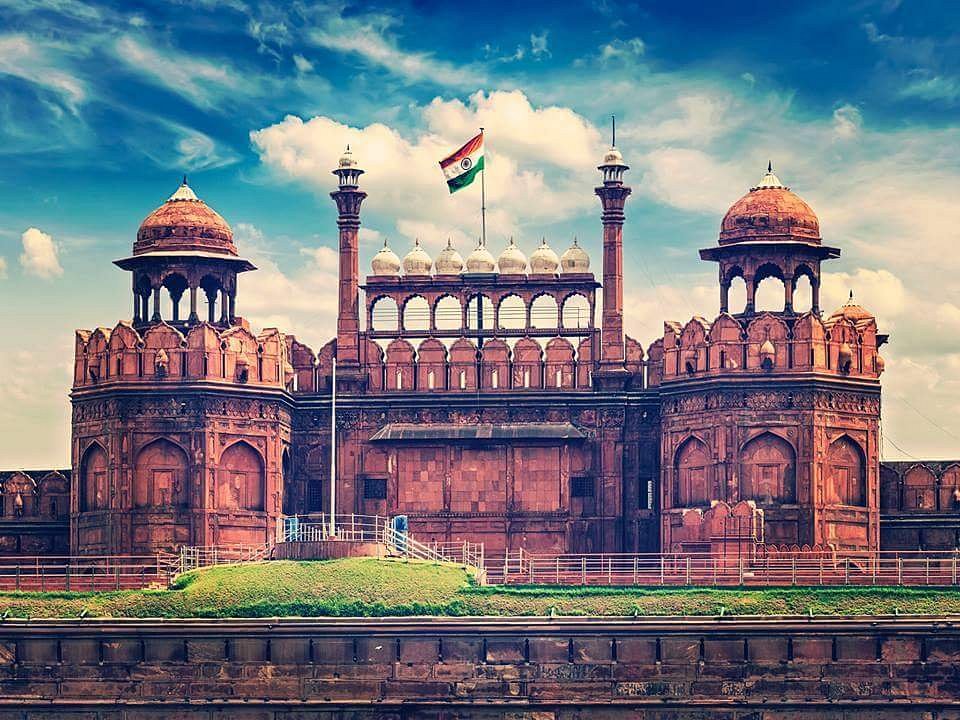Red Fort (Delhi): A Timeless Icon of India’s Glorious Heritage

Introduction: Standing majestically amidst the bustling streets of Old Delhi, the Red Fort stands as an enduring symbol of India’s rich history, cultural heritage, and architectural grandeur. With its imposing walls, magnificent palaces, and sprawling gardens, this historic fortress has witnessed centuries of triumphs, tragedies, and transitions, bearing witness to the rise and fall of empires and the birth of a nation. From its legendary origins to its enduring legacy, the Red Fort continues to captivate visitors with its timeless beauty and storied past. In this extensive article, we will embark on a journey through time to explore the history, architecture, significance, and cultural impact of the Red Fort, unraveling the tales and treasures that lie within its iconic walls.
History: The history of the Red Fort is steeped in the grandeur of the Mughal Empire, with its origins tracing back to the 17th century. Commissioned by the Mughal Emperor Shah Jahan, the fort was constructed between 1638 and 1648 as the imperial residence and seat of power for the Mughal dynasty. Built on the banks of the Yamuna River, the fort was originally known as “Qila-e-Mubarak,” or the Blessed Fort, due to its significance as the center of Mughal governance.
Over the centuries, the Red Fort served as the backdrop for numerous historical events, including grand celebrations, royal decrees, and imperial ceremonies. It was from the iconic Lahori Gate of the fort that the first Prime Minister of independent India, Jawaharlal Nehru, delivered his historic “Tryst with Destiny” speech on August 15, 1947, marking the end of British colonial rule and the dawn of a new era for the nation.
Architecture: The Red Fort is renowned for its magnificent architecture, characterized by its imposing walls, intricate marble inlays, and ornate decorations. Built primarily of red sandstone, the fort’s massive walls rise to a height of over 33 meters and stretch for approximately 2.5 kilometers, enclosing an area of around 255 acres.
One of the most striking features of the Red Fort is its impressive main entrance, known as the Lahore Gate, which is adorned with intricate carvings, floral motifs, and Persian inscriptions. Beyond the gate lies the Chatta Chowk, or the Covered Bazaar, a bustling marketplace where artisans and merchants once sold their wares to the imperial court.
Within the fort, visitors will find a wealth of architectural marvels, including the Diwan-i-Aam, or Hall of Public Audience, where the emperor would meet with his subjects, and the Diwan-i-Khas, or Hall of Private Audience, adorned with delicate marble carvings and a magnificent marble throne. Other notable structures include the Moti Masjid, or Pearl Mosque, and the Rang Mahal, or Palace of Colors, each showcasing the opulence and grandeur of Mughal architecture.
Significance: The Red Fort holds immense significance as a symbol of India’s rich cultural heritage, architectural excellence, and historical legacy. It has been recognized as a UNESCO World Heritage Site and a national monument, preserving its legacy for future generations.
Beyond its historical and architectural significance, the Red Fort is also deeply intertwined with the cultural identity of Delhi and the nation as a whole. It has inspired poets, writers, and artists for centuries, serving as a muse for tales of valor, romance, and intrigue. The fort’s enduring legacy continues to resonate with people around the world, offering a glimpse into the rich tapestry of India’s past and the spirit of its people.
Visitors to the Red Fort can explore its magnificent palaces, stroll through its lush gardens, and immerse themselves in its rich history and cultural heritage. They can witness the grandeur of Mughal architecture, marvel at the intricate details of its decorations, and experience the palpable sense of history that permeates its ancient walls.
Conclusion: In conclusion, the Red Fort stands as a monumental testament to the grandeur, resilience, and cultural richness of India. From its legendary origins to its enduring legacy, the fort continues to inspire awe and admiration in all who visit. As a symbol of India’s rich cultural heritage and a UNESCO World Heritage Site, the Red Fort holds a special place in the hearts of millions of people around the world. Whether exploring its majestic halls or gazing out at the sprawling expanse of its gardens, visitors to the Red Fort are transported back in time to an era of imperial splendor and cultural magnificence. Truly, the Red Fort is not just a fortress; it is a living monument to the enduring spirit and cultural heritage of India.




